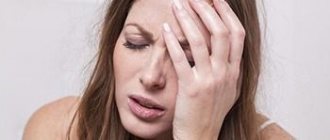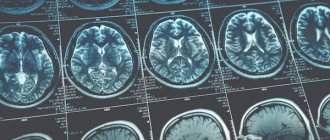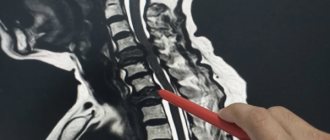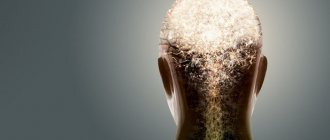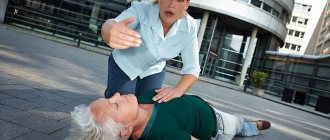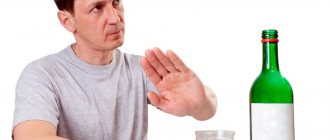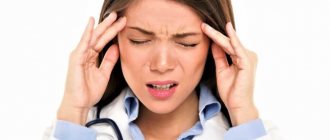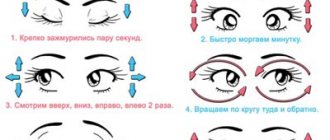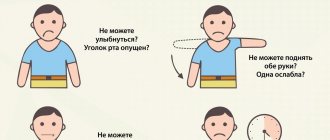Hirudotherapy for stroke
Stroke is a very serious and terrible disease in which the substance of the brain is affected and the vital functions of a person are affected. Just 50 years ago, stroke was considered a disease of old people, but today it occurs even in people 30–40 years old. Currently, hirudotherapy is widely used . treatment with leeches.
The term stroke combines two very different diseases due to their causes - ischemic stroke and hemorrhagic stroke.
Ischemic stroke occurs due to disruption of the blood supply to the brain. The cause of this is usually a blood clot trapped in the arteries leading to the head. Brain cells do not receive the required amount of oxygen and die very quickly, and in their place a connective tissue scar or cyst (a cavity filled with fluid) is formed. Of course, these areas of the brain lose their function and the person develops neurological deficits.
An ischemic stroke develops gradually, over several hours, and may have precursors: impaired vision, hearing, and temporary paralysis. Consciousness is usually preserved. This condition is called pre-stroke; if you start the necessary treatment at this time, you can avoid the serious consequences of a stroke or even prevent it altogether.
Hemorrhagic stroke is caused by rupture of an intracranial vessel, which is accompanied by hemorrhage into the brain. The most common cause of this is a hypertensive crisis, an increase in blood pressure. Hypertension and atherosclerosis (the formation of fatty plaques on the walls of blood vessels) cause changes in the vascular wall, it becomes inelastic, thin and fragile. When pressure increases, the vessel cannot withstand it and ruptures. Hemorrhage can also cause rupture of an intracranial aneurysm (congenital defect of cerebral vessels) and arteriovenous malformation (formation of a pathological connection between an artery and a vein).
Hemorrhagic stroke has an acute onset and usually develops during the day, after physical work. The patient suddenly turns red, feels headache, nausea and loses consciousness. It is almost impossible to prevent the onset of a hemorrhagic stroke.
If a person has a stroke, he must be urgently taken to the hospital . The less time passes from the onset of the disease to the start of medical care, the greater the chances of survival and restoration of brain function. After the incident, hirudotherapy can be used.
Stroke is a serious disease that threatens a person’s life, so it must first be treated with potent drugs in a hospital setting.
The use of hirudotherapy is effective primarily in the pre-stroke period. Hirudin secreted by medicinal leeches is capable of:
— dissolve fibrin, which makes up blood clots and improve blood fluidity. This prevents the development of ischemic stroke. And if a stroke does occur, it helps to quickly restore the patency of the blood vessels in the head.
- lower blood pressure through a reflex effect on the corresponding brain centers.
— strengthen and restore the structure of the vascular wall.
During the acute period of the disease, the use of hirudotherapy should be very careful and agreed with the attending physician, since the patient’s condition may be unstable and any effects may be harmful.
Leech treatment also widely used during the rehabilitation of patients who have suffered a stroke. At this time, all efforts are aimed at restoring neurological functions and preventing stroke recurrence. Hirudotherapy has a positive effect on:
- blood supply to the brain. Leeches are installed on reflex zones and cause irritation, thereby stimulating blood circulation and vasodilation. The affected tissues begin to receive nutrients, and toxic metabolites are washed out of them. This speeds up neuronal recovery and reduces neurological deficits.
- reduces swelling of brain tissue, which always appears after a stroke and slows down a person’s recovery.
- preventing a recurrent stroke by dissolving existing blood clots and preventing their formation, strengthening the vascular wall, normalizing blood pressure..
To make an appointment for a consultation and undergo further treatment, you can contact the Doctors
Hirudotherapist."
Treatment of stroke with leeches
Treatment of a complex disease is carried out in a hospital using potent medications. To get rid of apoplexy, complex treatment is prescribed, which may include hirudotherapy. The method is used as an additional means for prophylactic purposes to prevent the recurrence of a new stroke. During the procedures, medical leeches are used, which are raised in factories; before the procedures, they must fast for 6 months. Each blood-sucking individual is used only once, then it is destroyed. The mucus of worms contains many useful substances, which is why they are used in the treatment of many diseases.
The saliva of the blood-sucking worm contains up to 200 beneficial compounds, as well as the main hirudin. As a result, the treatment method:
- has a reflex effect on the centers of the brain and reduces blood pressure;
- dissolves fibrin, which causes blood clots, the blood becomes liquid;
- improves blood supply;
- strengthens and restores blood vessels;
- supplies the body with useful substances and vitamins;
- has an anti-inflammatory effect;
- the risk of developing blood clots is reduced;
- delivers oxygen to organs and tissues;
- restores neurological activity;
- reduces the risk of a recurrence of a new stroke.
Is it possible to apply leeches after a stroke? If apoplexy is in the acute stage, then the method of treatment with leeches is used carefully and under the supervision of a doctor. At this time, the sick patient's condition is unstable and such therapy can cause harm. Blood-sucking worms are prescribed mainly during the recovery period. For this stage, the main thing is to rehabilitate the activity of the nervous system and prevent recurrences of apoplexy.
Simple ways to treat complex diseases:
Horseradish is the only plant that can draw salt through the pores of the skin. Do it - you won't regret it! Horseradish leaves will help get rid of all the salt that has accumulated in the body and can lead to painful salt deposits...Check... Read more
Never give an antibiotic BEFORE you get a blood test with a leukemia formula. Remember, write to yourself somewhere in a visible place!!! INCREASED leukocytes, ESR, lymphocytes - VIRUS. INCREASED leukocytes, ESR, segmented and rod neutrophils... Read more
What 1 glass of this drink will do to your liver can be called a real miracle! If the liver is overloaded or does not work well, we immediately feel it. Weakness, lack of energy, dizziness, nausea, pain in the right hypochondrium, problems with food... Read more
Dandelion is the elixir of life, and what a medicine!!! The medicinal dandelion is an unpretentious plant, but contains a good half of the chemical elements of the periodic table. Sodium, potassium, manganese, magnesium, and... Read more
Seeds that repair tendons and reduce joint pain. We treat osteoporosis and osteoarthritis. Osteoarthritis of the knee is a type of degenerative joint disease or arthritis that is localized in the knee and can cause pain and di... Read more
INTERESTING fact: Leeches for mastopathy
Treatment with blood-sucking individuals has the following effects:
- improves blood circulation;
- delivers ozone to the brain faster;
- reduces swelling of the gray matter epithelium;
- dilutes blood clots and prevents the formation of new ones.
Treatment with leeches will help with strokes
Our heart is the engine of the whole organism. But sometimes it also “jams”: pressure fluctuates, stabbing and aching in one area or another of the heart. Oddly enough, we are also partly to blame for this: we eat high-calorie and fatty foods, have bad habits, abuse sweets, although the doctor says - you can’t! And this, by the way, threatens us with a stroke. If you said “yes” to at least three of the above prohibitions, then the likelihood of getting sick increases by at least 7-8 times.
Let us recall that a stroke (from the Latin “blow”) is an acute disorder of cerebral circulation, which is characterized by the sudden appearance of focal or cerebral neurological symptoms.
The development of an ischemic stroke at first manifests itself in the fact that a person often has a headache, noise in the ears, he feels weak, dizzy and feels like everything is falling out of his hands. Later, causeless anxiety, irritability, forgetfulness and insomnia appear. If you have several of the above symptoms and they are intermittent (happening more than twice a week or lasting about three months), then you should be concerned.
This often happens because the brain does not receive enough blood, and with it, oxygen. Precursors of stroke are arterial hypertension, vascular dystonia or atherosclerosis. If blood flows poorly to the brain, many people develop vascular encephalopathy, and in some cases, a stroke. Whether an ischemic or hemorrhagic stroke is not a death sentence. Why? For many reasons, because today multiple methods of its treatment have been invented, in particular, hirudotherapy
–
treatment with leeches
.
Let's look at how this treatment
is used for any type of stroke.
The cause of a disease such as ischemic stroke is poor blood supply to one or more areas of the brain. Often, an ischemic stroke due to extensive hemorrhage causes a brain infarction, a condition when part of its tissue softens.
Previously, it was believed that ischemic stroke, which is 3-5 times more common than hemorrhagic stroke, is a disease of the old and elderly, but in today’s realities, full of stress and anxiety, it also happens in middle-aged people who have not yet turned 50.
Ischemic stroke can be acute or subacute, and has a chronic or stepwise development.
The acute type occurs very quickly and sharply, literally within a few minutes. Subacute signs develop over several hours, and sometimes even days, while step-by-step signs have a spasmodic character with short breaks of a couple of days. In this case, the patient only gets worse, and improvement occurs within a few weeks.
The chronic type of development is characterized by a gradual increase in symptoms, when the disease progresses over several weeks or even months.
Most often, in patients with stroke, doctors make a diagnosis: acute and subacute development. The chronic form practically does not occur.
Alarm bells of an ischemic stroke that you should pay attention to may include nausea, vomiting, pain in any part of the head, and sometimes attacks similar to epileptic attacks and loss of consciousness.
The worse the blood circulation, the more pronounced ischemia can be. The extent to which the tissue of the cerebral artery will be affected depends on this, which can cause paralysis of the facial muscles, tongue and cause loss of sensitivity.
Often the consequence of arterial hypertension is a hemorrhagic stroke (usually with anxiety, physical exertion, overwork, and is often accompanied by atherosclerosis). The underlying cause of this type of stroke may be hypertension or a ruptured aneurysm.
If the cause of hemorrhage is arterial hypertension, then it is often accompanied by hypertensive crises that deform intracerebral vessels.
There are three types of hemorrhage development. The first is characterized by rupture of cerebral vessels, their deformation at the time of sudden surges in blood pressure.
Such hemorrhages are accompanied by the occurrence of intracerebral hematomas, which destroy the white matter in the hemispheres.
The second type of hemorrhage occurs under the harmful influence of active compounds on the vessel wall, as well as enzymes that accumulate at the epicenter of brain damage. Small hematomas with softened areas of brain tissue appear there.
The third type, which also includes diapedetic hemorrhages, provokes ischemia of the vascular wall, as well as an increase in its permeability. The consequence of hemorrhage is obvious - these are intracerebral hematomas.
Another group, which is often diagnosed in young 20- and 30-year-old patients, and these are vigorous and healthy men, have hemorrhagic strokes and spontaneous cerebral hematomas characteristic of them.
Recent studies show that hematomas occur after formations in the veins and arteries, and this is a congenital defect in the vascular system. Everyone understands that treatment for stroke
there is no need to delay it, but in practice few measures are taken to reduce the risk of the disease.
What are the features of hemorrhagic stroke? It is characterized by suddenness (literally: “blow of blood”). It happens that a person is first plagued by headaches, migraines, even the root causes of epilepsy. Physical and psychological health factors: nervous exhaustion, stress lay the foundation for further hemorrhagic stroke.
Three types of hemorrhagic stroke (or non-traumatic intracerebral hemorrhage) are considered: acute, subacute, chronic.
The most common type is the first (acute), which begins with a state of coma and is characterized by disruption of the heart and respiratory system. This form occurs in every fourth patient and is also manifested in increased sweating, rapid heartbeat, breathing complications, sudden deterioration in hearing, blurred vision, etc. If treatment for a stroke is not started in time, it can result in a coma. Often before the stroke itself, a person experiences a sharp headache, a feeling of vomiting, changes in blood pressure, poor coordination of movements, fatigue, weakness, and ringing in the ears.
A tenth of patients have a chronic form of hemorrhagic stroke. It is characterized by instability: a person either feels bad or is fine again, pressure changes deplete the nervous system. At the same time, the risk of death is in no way inferior to the acute form.
When a person begins to develop a stroke, his head should be wrapped in something cold and a heating pad with warm water should be placed on his feet. It is clear that rest and bed rest are needed to restore strength and energy. After the main therapy, physiotherapy and treatment with leeches
. gymnastics.
Physiotherapy includes several components: electrotherapy, low-frequency alternating current treatment, hydrotherapy. A positive effect was noticed after exposure to various specific methods (acupuncture, cauterization, pressure, etc.), possibly treatment with light, paraffin, air ionization.
Good conditions for spa treatment, support from family, loved ones, and a loved one (but also privacy with oneself) significantly improve the patient’s well-being and influence the process of stroke treatment
. Certain medical treatments play a primary role in official practice. Drugs are offered, including papaverine, dibazol, no-spa, biogenic stimulants, etc.
of treating strokes with leeches have been known since ancient times.
.
Treatment with leeches
involves unloading the local blood flow with hirudas (special medical leeches). In addition, their saliva contains a whole palette of active substances that promote better blood circulation.
Despite the fact that treatment with leeches
(also called hirudotherapy, bdellotherapy) is not the most effective way to combat stroke, it has many positive effects on the human body as a whole. Blood pressure is normalized, blood circulation and human well-being are improved.
In general, treatment with leeches
- of course, piquant, but a pretty good method to get rid of many diseases associated with blood circulation.
Since the medicinal leech
has more than three dozen healing effects on the human body, the most important of which are considered to be: reducing blood clotting, destroying blood clots, improving the supply of blood and oxygen to tissues and organs.
Medicinal leeches are bred
in specially equipped complexes.
By the way, treating stroke with leeches
today is not such an expensive way to improve your health.
Hirudotherapy treatment works like this. The leech is placed in a certain place on the body, it attaches itself and gradually bites through the skin to a depth of about one and a half to two millimeters. At this time, the leech injects saliva into the bite site, which contains the enzyme hirudin (it prevents blood clotting). During hirudotherapy
.
with which hypertension
.
It is recommended to lower the leeches
simultaneously to both the right side of the head and the left.
It should be noted that there are different points of influence on the human body when treating stroke with hirudotherapy
.
Medicine notes that hirudotherapy
reduces the erythrocyte sedimentation reaction. And it is precisely one of the main physiological indicators of health.
You can’t do without leeches if you have a stroke, according to hirudologist Lukashev
We remind you that only high-quality medical leeches are used for hirudotherapy sessions, which can be purchased at our biofactory. We carefully monitor the quality of our products.
Tissues and organs, and equally the brain, require oxygen and nutrients to function extremely well.
Blood acts as a transport; it carries vitamins, minerals, amino acids and all other benefits necessary for life through the arteries, which, by the way, are fully present in the saliva of a medicinal leech and have therapeutic properties. Constant circulation of blood is of great importance, and it is very important for life that it does not stop. After all, brain cells (and all other cells) will simply die without oxygen; this element is the basis for the existence of all living things. An acute cerebrovascular accident is called a stroke. The Stroke Foundation in Russia reported that a stroke occurs every 1.6 minutes. Taking care of your health and lifestyle is prevention; it will prevent 80% of strokes from developing. But people, when nothing hurts anywhere, do not want to think about prevention.
In addition to drug treatment, medicine recommends acupuncture for those who have suffered a cerebral hemorrhage, which has a positive effect on their health. The fact is that with hirudopuncture the meaning of the procedure is the same: living individuals are placed on acupuncture (active) points. The effect of the hirudopuncture method is achieved in a complex manner and consists of mechanical, reflex, bioenergetic and biochemical effects on the body. Leech therapy occurs without complications, without side effects on the body, unlike chemical medications.
The beneficial effects of hirudotherapy on patients with stroke have been reliably established by researcher V.A. Lukashev, who in the late 40s of the last century studied the use of leeches to treat diseases of the nervous system. During stroke and during rehabilitation today, small slippery worms are often used to bring relief.
The placement scheme for medicinal leeches looks like this: crown, mastoid processes, cervical vertebrae (slightly higher), between the eyebrows, right or left lower jaw (depending on the affected side). If there is ischemic disease or a pre-stroke situation, bloodsuckers are applied to the coccyx, crown, cervical vertebrae, area of the carotid arteries (not on the arteries themselves), under the tongue, on the tip of the tongue. Most often, 2-4 individuals are placed behind the ears, on the mastoid processes. Leeches are applied symmetrically and simultaneously.
The duration of the course depends on the course of the disease. After the first procedure, positive changes may be visible. Good results are achieved due to the therapeutic effects of leech secretion, which consists of a large number of biologically active substances and enzymes. For example, hirudin prevents blood clotting, destabilase removes blood clots, apyrase destroys cholesterol plaques, orgelase eliminates the appearance of new blood clots, histamine-like substances protect against vascular insufficiency and a decrease in vascular tone.
After hirudotherapy procedures, the patient is recovering and his blood pressure is gradually returning to normal. According to laboratory tests, positive changes are occurring towards a constant blood composition, a decrease in the erythrocyte sedimentation reaction, one of the serious physiological parameters. A medical leech has a targeted effect on the cause of the disease, and does not simply weaken its symptoms for some time.
Leech treatment:
Leeches
used in
the treatment
of a large number of diseases.
Research has shown that after leech
, more than two hundred enzymes are contained in
of the leech's
salivary glands .
injects the patient with strictly defined ones - those that he needs for treatment
.
In addition,
when
treating diseases
Medical LEECHES prove themselves to be natural acupuncturists, who can be the envy of many representatives of oriental medicine.
The truth of the myth is the following: “When a leech
is given “freedom of choice”, it sticks only where biologically active points are located.”
Therefore, it is necessary for doctors to place leeches
, then a session
of hirudotherapy
(placement of a leech) combines three types of healing effects: acupuncture, therapeutic bloodletting and “injection” of irreplaceable biologically active substances contained in the secretion of
the leech’s salivary glands
.
How is stroke treated with leeches?
Hirudotherapy is an auxiliary treatment measure that prevents recurrent stroke. It is also effective in preventing disease. The essence of the treatment is that hirudin resolves blood clots and ensures vascular patency.
For the session, leeches are selected that are grown in factories and kept on a starvation diet for six months. Each worm is used only once, after which it is disposed of. The leech lands on a prepared area of the body and bites the skin at the nearest acupuncture point. Together with her saliva, more than a hundred biologically active substances enter the bloodstream, which have a beneficial effect on health.
Treatment with leeches will help with strokes
Our heart is the engine of the whole organism. But sometimes it also “jams”: pressure fluctuates, stabbing and aching in one area or another of the heart. Oddly enough, we are also partly to blame for this: we eat high-calorie and fatty foods, have bad habits, abuse sweets, although the doctor says - you can’t! And this, by the way, threatens us with a stroke. If you said “yes” to at least three of the above prohibitions, then the likelihood of getting sick increases by at least 7-8 times.
Let us recall that a stroke (from the Latin “blow”) is an acute disorder of cerebral circulation, which is characterized by the sudden appearance of focal or cerebral neurological symptoms.
The development of an ischemic stroke at first manifests itself in the fact that a person often has a headache, noise in the ears, he feels weak, dizzy and feels like everything is falling out of his hands. Later, causeless anxiety, irritability, forgetfulness and insomnia appear. If you have several of the above symptoms and they are intermittent (happening more than twice a week or lasting about three months), then you should be concerned.
This often happens because the brain does not receive enough blood, and with it, oxygen. Precursors of stroke are arterial hypertension, vascular dystonia or atherosclerosis. If blood flows poorly to the brain, many people develop vascular encephalopathy, and in some cases, a stroke. Whether an ischemic or hemorrhagic stroke is not a death sentence. Why? For many reasons, because today multiple methods of its treatment have been invented, in particular, hirudotherapy
–
treatment with leeches
.
Let's look at how this treatment
is used for any type of stroke. read more.
Why does stroke occur and is there any prevention?
— There are risk factors for stroke. There are about 50 of them in total, the most basic ones are high blood pressure, diabetes mellitus, genetic predisposition, heart rhythm and blood clotting disorders, and so on.
In order to prevent the first stroke, there is primary prevention. It includes normalization of blood pressure, cholesterol and blood sugar levels, as well as surgical intervention for stenosis of the carotid artery, that is, narrowing of its lumen.
But if a person has already had a stroke, then secondary prevention is indicated. In principle, these are the same measures, it’s just that the risk of stroke becomes higher and you need to monitor your condition more carefully.
In case of stroke and the presence of risk factors, duplex scanning of the arteries of the brain is performed. It helps identify narrowing of the arteries. Many patients require echocardiography, heart rate monitoring, and blood clotting studies.
Medicine, hospital.
CC0
Stroke occurs in young people, very rarely in children, but most often in older people. But this does not mean that you don’t need to take care of your health until you get old.
Treatment of sinusitis and tuberculosis with leeches
Sinusitis in medicine refers to diseases that are characterized by inflammatory processes in the paranasal sinuses. The nasal sinuses represent the beginning of the respiratory tract; These are the uppermost organs of the respiratory system. The sinuses are divided into four types. These are the maxillary, frontal, ethmoid and main sinuses. Naturally, these sinuses are located on both sides - right and left - of the nasal septum, in other words, they are a paired organ.
Sinusitis can be unilateral or bilateral. Inflammation of the paranasal sinuses can have acute and chronic forms. Separately, general sinusitis is also distinguished. It is called pansinusitis. Hirudotherapy is performed for some types of sinusitis. In particular, with frontal sinusitis, sinusitis and ethmoiditis. Each of these diseases means inflammation of one of the paranasal sinuses. But first things first.
Sinusitis is sinusitis of the maxillary sinuses (the name itself indicates the type of sinus that is affected). The whole problem with sinusitis is that the mucus that accumulates in the sinuses does not come out. Over time, mucus, under the constant influence of inflammation, mucus turns into pus. This maxillary sinusitis can be overcome with just a few sessions of hirudotherapy. If you completely neglect the treatment of this disease, then the pus can rupture the maxillary sinuses and then the inflammation will spread to the bone tissue of the upper jaws. But even in this case, an experienced hirudotherapist
can place
leeches
on certain points and thus relieve inflammation
With frontal sinuses, the frontal sinuses become inflamed. Frontal sinusitis rarely occurs as an independent disease; rather, it is the result of a previous infectious disease. Treatment with leeches is carried out slightly above those areas of the face under which the frontal sinuses are located.
The inflammatory process involving the ethmoid paranasal sinuses is called ethmyoditis. With ethmyoditis, a person has difficulty distinguishing odors and has nasal congestion. Elevated temperature is also often an indicator of ethmyoditis. A striking difference from other types of sinusitis is that ethmyoditis is that with this disease a person experiences pain in the bridge of the nose.
There is a very serious disease that can also be helped by hirudotherapy
.
this is tuberculosis. Tuberculosis is a disease that can affect both the lungs and other organs. Tuberculosis is an infectious disease, its causative agent is the so-called Koch bacillus, a bacterium discovered by the German microbiologist Robert Koch. Bacteria called Koch bacilli are very resistant to many irritants, therefore they survive in various conditions and exist for quite a long time. Once dried, they do not lose their vitality. When they enter the human body, Koch bacilli often do no harm at all. The thing is that they can easily be defeated by immune cells. The disease occurs when the immune system is significantly weakened by exposure to certain harmful substances (smoking, alcohol, poor diet, etc.), then bacteria affect various organs and systems. The highest frequency of these lesions is in the lungs and bones. But tuberculosis can occur in the kidneys, lymph nodes and even the eyes. Therefore, the question of how much treatment with leeches
can help with tuberculosis becomes very important and requires an answer. read more.
When should rehabilitation begin?
— Rehabilitation begins as early as possible. But sometimes it is postponed - it all depends on the person’s condition: if he has circulatory failure, respiratory failure, fever - rehabilitation methods are very limited. This can be positional treatment, passive gymnastics, but nothing more.
Positional treatment is a special positioning of the patient, which promotes early restoration of movements, prevents spasticity, improves blood circulation and prevents the formation of bedsores.
Rehabilitation of patients after a stroke significantly reduces disability.
Anna Zaikova
If everything is normal for a person and there are no contraindications, then rehabilitation measures can be started from the moment of admission and carried out as long as the patient needs. Maybe weeks. Maybe years.
Inpatient rehabilitation begins. Further, the patient continues treatment in sanatoriums according to indications. Some go to clinics, while others go to private clinics - they offer treatment both under compulsory medical insurance and for a fee.
Preparatory stages in treatment with leeches
Hirudotherapy
- not such a simple procedure.
It requires a serious approach and the fulfillment of certain conditions and rules. The fact is that (the very first thing!) the leech
must be of high quality.
The quality of a leech
can only be determined by a person who is a specialist in
hirudotherapy
.
The second issue that must be resolved before using a medicinal leech
is the treatment of the patient’s skin.
In principle, it's not that difficult. And although it is better for a professional hirudotherapist to place leeches
, there are cases in which a
hirudotherapy
can be carried out by a nurse or even the patient himself. But about this in order.
If the disease is serious or the patient is in a moderate condition, then a session of treatment with leeches
should be carried out either by a specially trained physical therapist or a doctor specializing in this disease.
If the disease is of a milder form, or the patient is at the recovery stage, a hirudotherapy
can be performed by a nurse.
The patient himself can also give himself medicinal leeches
.
But this is the option when it comes to elementary cases. But before a specialist entrusts a patient to carry out treatment with leeches
medicinal leeches
should be placed .
On the day when the leech treatment
.
The patient's skin should not emit any odors. To do this, you need to take into account a lot of nuances and follow several rules. In particular, on the day of hirudotherapy, a person must give up drinking (alcohol) and smoking (the latter should be excluded for at least a few hours), bathing in the shower or bath, and applying cosmetics to the body. Working at home with all kinds of detergents and cleaning products (the same applies to working with chemicals on a plot of land or while “showing care” for a personal car) is also contraindicated before a hirudotherapy
. read more.
Types of apoplexy
Stroke is a serious disorder of the blood circulation of the brain, which is characterized by the manifestation of a neurotic symptom. As a result, brain neurons die, which leads to a disorder in speaking, coordination of movements and loss of consciousness. The reasons for the development of the disease are different, but mainly it is an incorrect lifestyle, alcohol and smoking, an unbalanced diet, and lack of physical activity.
There are two types of disease:
- The basis of an ischemic stroke is the formation of a blood clot that blocks an artery leading to the brain. This leads to a disruption in the blood supply to neurons and causes hypoxia. Characteristic signs: difficulties with spoken speech, impairment of auditory and visual functions, partial loss of motor activity and dizziness.
- A hemorrhagic stroke develops as a result of rupture of a vessel due to hemorrhage in the brain. The basis may be mild hypertension and high blood pressure. A hemorrhagic stroke appears quickly, within two minutes, even seconds. This phenomenon occurs during the day after strong physical exertion. Symptoms of a stroke: severe migraine, disgust, body heat that leads to loss of consciousness. Even quick actions do not make it possible to prevent apoplexy.
INTERESTING fact: How to stop bleeding after leeches
Leech treatment culture
The 19th century, especially its first half, is marked by a new event that is important for hirudotherapy
. The so-called leech breeding appears. “So-called” because at first it arises somewhat spontaneously, without a strict scientific basis. But first things first.
In the natural environment, i.e. in bodies of water where leeches
live in nature, only a very small number of the latter remain.
This was due to the fact that until the beginning of the century, leech catching flourished. The leeches
were caught by professionals who had been doing similar things for many days.
But even this fact did not guarantee that catching leeches
would not be done in a somewhat “poaching” way.
Moreover, leeches
were needed, this was needed by the hospitals that used them read more.
Treatment with leeches in ancient times
The medical significance of leeches has been known since ancient times. This is due to the fact that fishing was one of the very first crafts mastered by man. leeches more than once
.
It is likely that after the next (or next) bites
. ancient man began to feel better...
Bloodletting was among the first methods of helping in the fight against various ailments. Hirudotherapy
as a branch of medicine stood out even then.
We can find about methods of treatment with leeches
hirudotherapy was an independent direction in treatment in ancient times
I didn't.
Leeches
were used as a knife exclusively for the purpose of bloodletting.
According to the medical experts of that time, the leech
was only supposed to rid a person of unnecessary accumulations of blood.
About the medicinal qualities of the leech
.
Our ancestors had no idea about
saliva in particular But they were definitely sure that using a leech
for the purpose of the knife was better than using the knife itself. This was also explained by the fact that patients felt virtually no pain during the procedure. read more.
Treatment of stroke with leeches: prices
Prices for leech treatment depend on the number of leeches used and the number of procedures performed. The cost of the course will be determined by the hirudotherapist after he has drawn up a program taking into account the individual characteristics of the patient’s body.
Hirudotherapy in the treatment of stroke placement of 3 leeches – 1500 rubles
Hirudotherapy in the treatment of stroke, placement of 5 leeches – 2500 rubles
Hirudotherapy in the treatment of stroke placement of 3 leeches – 1500 rubles
Hirudotherapy in the treatment of stroke placement of 5 leeches – 2500 rubles
Hirudotherapy procedure for stroke, placement of 3 leeches – 1500 rubles
Hirudotherapy procedure for stroke, placement of 5 leeches – 2500 rubles
Hirudotherapy in the treatment of ischemic stroke placement of 3 leeches – 1500 rubles
Hirudotherapy in the treatment of ischemic stroke placement of 5 leeches – 2500 rubles
Treatment with leeches in gynecology
Parametritis (from the Greek para “about” and “metra” - uterus) is an inflammation of the peri-uterine connective tissue. It usually occurs as a complication of endometritis after childbirth, cesarean section, abortion, during the development of tumors and surgical injuries. Another disease associated with parametritis is endometritis - it is caused by an inflammatory process in the surface layer of the endometrium, the inner mucous membrane of the uterine body. Inflammation begins from the walls of the pelvis and affects the rectum area and the lateral entrance of the vagina. A cloudy, protein- and cell-rich hematogenous and histogenic fluid may appear, which sweats from small blood vessels at the site of inflammation. Such nodes can vary in density. At the first stage of development, parametritis is characterized by pain, fever, and a feeling of cold.
Later, the intensity of the pain decreases, the body temperature drops, however, then the process of urinating will become painful for the woman, and she may be tormented by constipation. There may be paroxysmal pain in the head, and perhaps a feeling of aching in the lower back. But serious problems arise when ulcers get into the rectal area. If proper treatment is carried out, recovery will occur quite quickly. At the acute stage, you should adhere to bed rest, refrain from bad habits, physical and psychological stress. The abdominal area should be wrapped in cold. Penicillin is becoming the main medical drug in the treatment of such gynecological problems as parametritis. Paraffin applications, treatment with hot wax, special mud, and ultraviolet radiation are also used. Of course, spending time at the resort greatly improves the overall healing process. Streptococci, staphylococci and gonococci lead to suppuration of the ovaries - pyovarium. microbes cause a number of different suppurations. Bacteria, entering the ovarian area through the vessels, cause inflammation - oophoritis read more.
Hemorrhagic stroke
The most severe variant of the disease is hemorrhagic stroke.
It is a complication of hypertension. The blood vessel, unable to withstand the increased pressure on the wall, ruptures, and blood enters the brain matter. The resulting hemorrhage compresses the brain, causes swelling, and the area of the brain dies. This type of stroke occurs more often after a difficult, stressful day. By evening my head is splitting with pain. Objects begin to appear red, nausea and vomiting appear, and the headache gets worse - these are the harbingers of a stroke. Then movements, speech, and sensitivity are disrupted, and conditions ranging from mild stupor to loss of consciousness and coma arise—this is the stroke itself.
Treatment of thrombophlebitis with leeches
Thrombophlebitis (from the Greek thrombos - clot and phlebos - vein) is a vascular disease that manifests itself in the clogging of veins with blood clots with subsequent inflammation of the vein walls. In most cases, this disease affects a person's legs. As a rule, the cause of thrombophlebitis is bacteria: streptococci, staphylococci, pneumococci. Thrombophlebitis is often caused by a complication after suffering from typhoid fever, sometimes it appears after surgery (if infected with strepto-staphylococcal infection). Thrombophlebitis is often associated with varicose veins.
There are several forms of thrombophlebitis: non-purulent, purulent, ascending, septic, migrating, recurrent. And all these forms can and should be treated with leeches
.
In parallel with this, there is another classification of forms of thrombophlebitis, which suggests distinguishing this disease depending on its distribution. There are superficial and deep thrombophlebitis. There are acute and chronic forms of thrombophlebitis.
Symptoms of thrombophlebitis of the superficial veins in the legs are: pain in the veins, thickening of the veins, redness of the skin in the vein area, swelling of the limb.
Treatment of thrombophlebitis, as well as its prevention, consists of performing special gymnastic exercises, as well as using elastic stockings and socks. For the prevention and treatment of thrombophlebitis, staying at a resort and using sulfur baths will also be beneficial - but such treatment should be taken only when a person gets rid of the acute form of thrombophlebitis. After this, you can begin treatment
with leeches
.
but that's after. Indeed, with acute thrombophlebitis, the patient often needs surgery (especially if there is suppuration - but even in this situation, an experienced hirudotherapist can begin treatment with leeches
). When a person feels a sharp rise in temperature, pain in the legs, or enlarged lymph nodes in the groin area, you need to consult a doctor as soon as possible, because the above symptoms can be the beginning of serious complications. Self-treatment of acute thrombophlebitis can even be life-threatening. In case of subacute (and even more so acute) thrombophlebitis, the patient is offered light exercises and warm compresses.
Since the main cause of the disease is excessive blood clotting, anticoagulants (substances that cause blood clotting) are highly required during the treatment of thrombophlebitis. They can act on different levers of the blood clotting process. Among them there are drugs of direct (for example, heparin) and indirect action (dicoumarin, phenylin). read more.
Where do they put it?
Where to place leeches during a stroke and the scheme is selected by a specialist individually for the patient. Hirudotherapy requires compliance with two important rules: first, the quality of leeches, second, proper treatment of the patient’s skin and placement of worms.
In addition, during sessions, the patient should not use strong aromatic objects, for example, scented soap, eau de toilette. Worms do not like strong odors.
Where to put leeches for a stroke:
- placement locations are behind the shells of the ears, approximately 1 cm from them;
- babies are placed up in a vertical line;
- also with apoplexy, the area of placement is the coccyx;
- The duration of treatment is determined by a specialist individually depending on the patient’s condition.
The technique is effective in the treatment and prevention of apoplexy, many reviews say so. There is information that hirudotherapy has helped to recover from a stroke. This is an excellent method for maintaining health and preventing recurrence of apoplexy. Treatment with this method accelerates hematopoiesis, regenerates capillaries and some areas of the vascular system.
INTERESTING fact: Treatment of psoriasis with leeches
Contraindications:
- hemophilia;
- oncological tumor;
- anemia;
- high blood pressure.
Health to you!
Treatment of heart attack with leeches
A heart attack (from the Latin “infarcire” - to stuff, stuff) is necrosis (death) of an organ. It happens as a result of lack of blood supply. The cause of a heart attack may be thrombosis, embolism, prolonged arterial spasm and functional overstrain of the organ under conditions of hypoxia with insufficiency of collateral circulation. Myocardial infarction is one of the clinical forms of coronary heart disease, occurring with the development of ischemic necrosis of the myocardium due to the absolute or relative insufficiency of its blood supply. After observations and research, medicine sees the cause of heart attacks precisely in a person’s way of life and his stress state. As we see in practice, this diagnosis is typical for the younger generation in particular. Naturally, the causes of a heart attack and the course of the disease are varied. Pathology contributes its “I” to the occurrence and complications of a heart attack.
According to the course of the infarction, monocyclic, prolonged, recurrent and repeated myocardial infarction are distinguished. Neurosis (from ancient Greek - nerve) is a neurotic disorder, psychoneurosis, leading to involuntary contraction of muscles or muscle groups, coronary spasm. Subsequently, the size of the blood vessels decreases and blood flow slows down. A high-molecular, non-globular protein, fibrin, appears in this blood. Blood clots (from ancient Greek - lump) appear in the vessels - a pathological blood clot in the lumen of a blood vessel. A person may feel pain in the chest (angina). read more.
